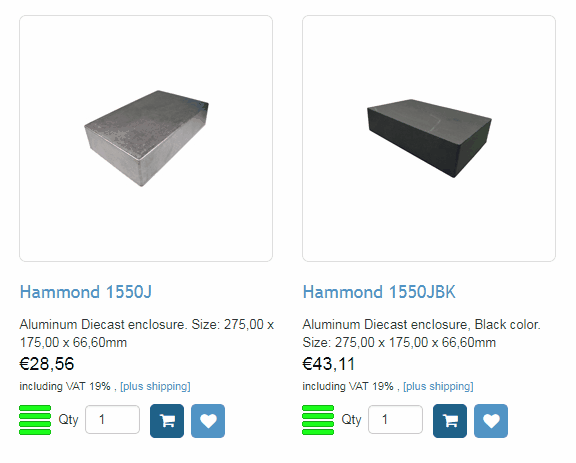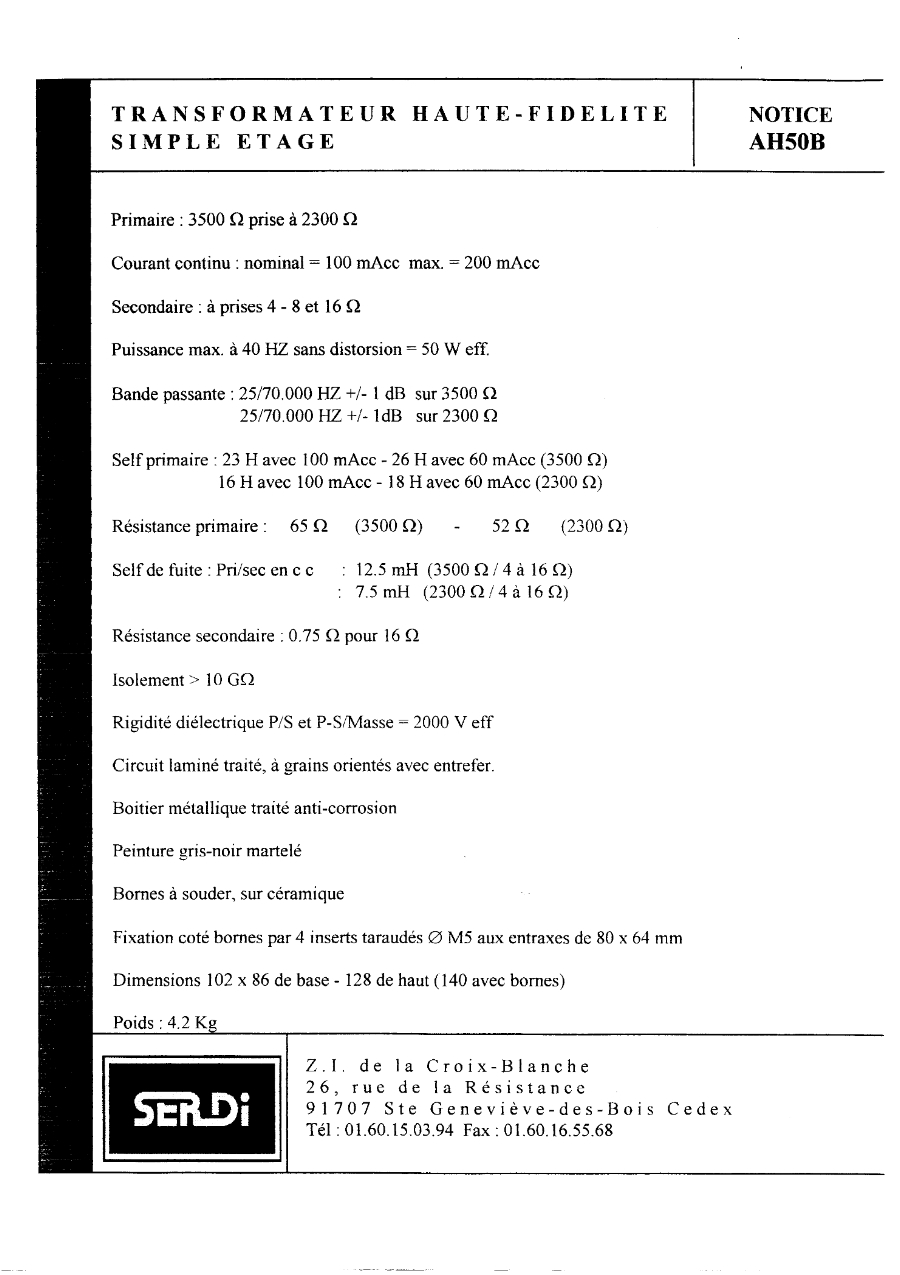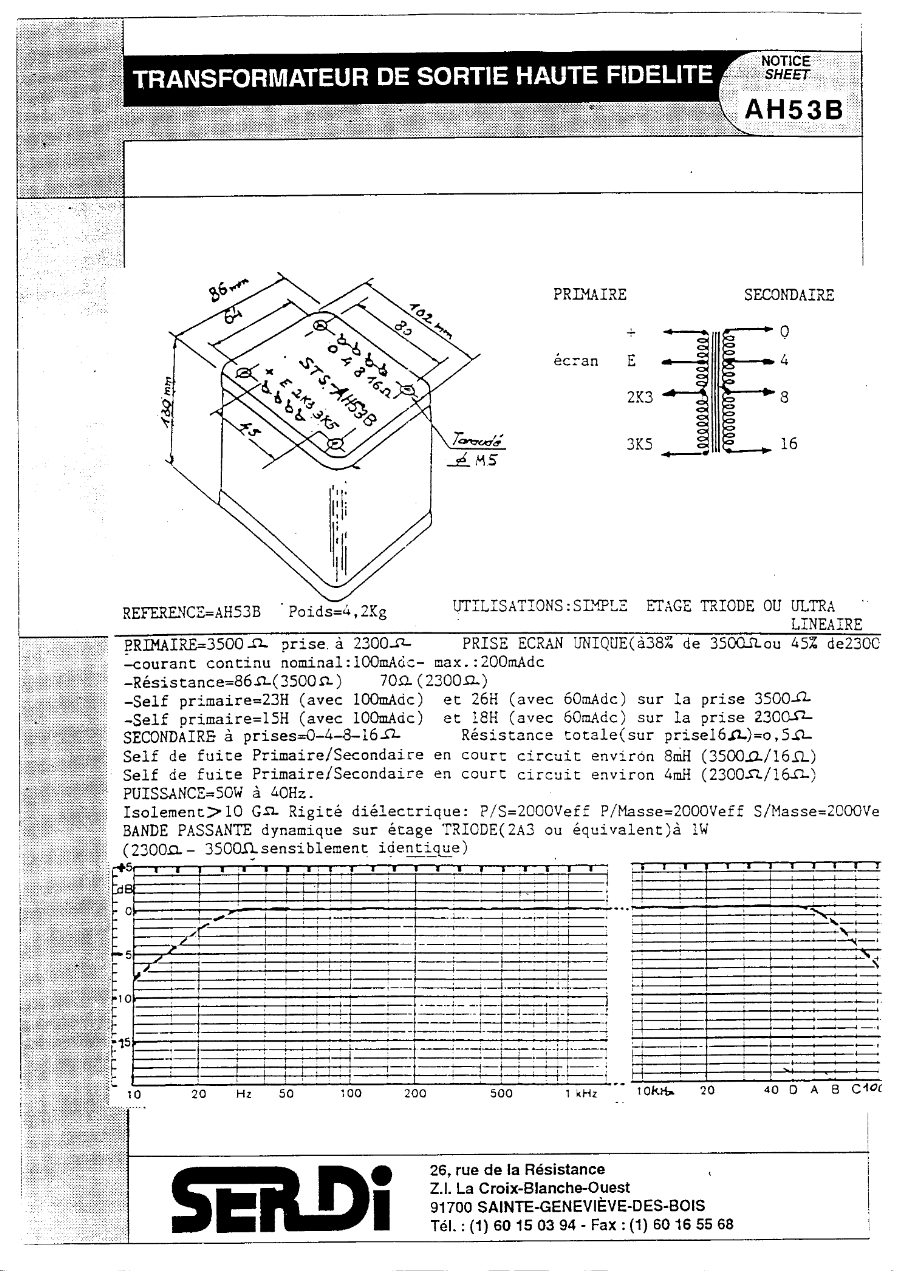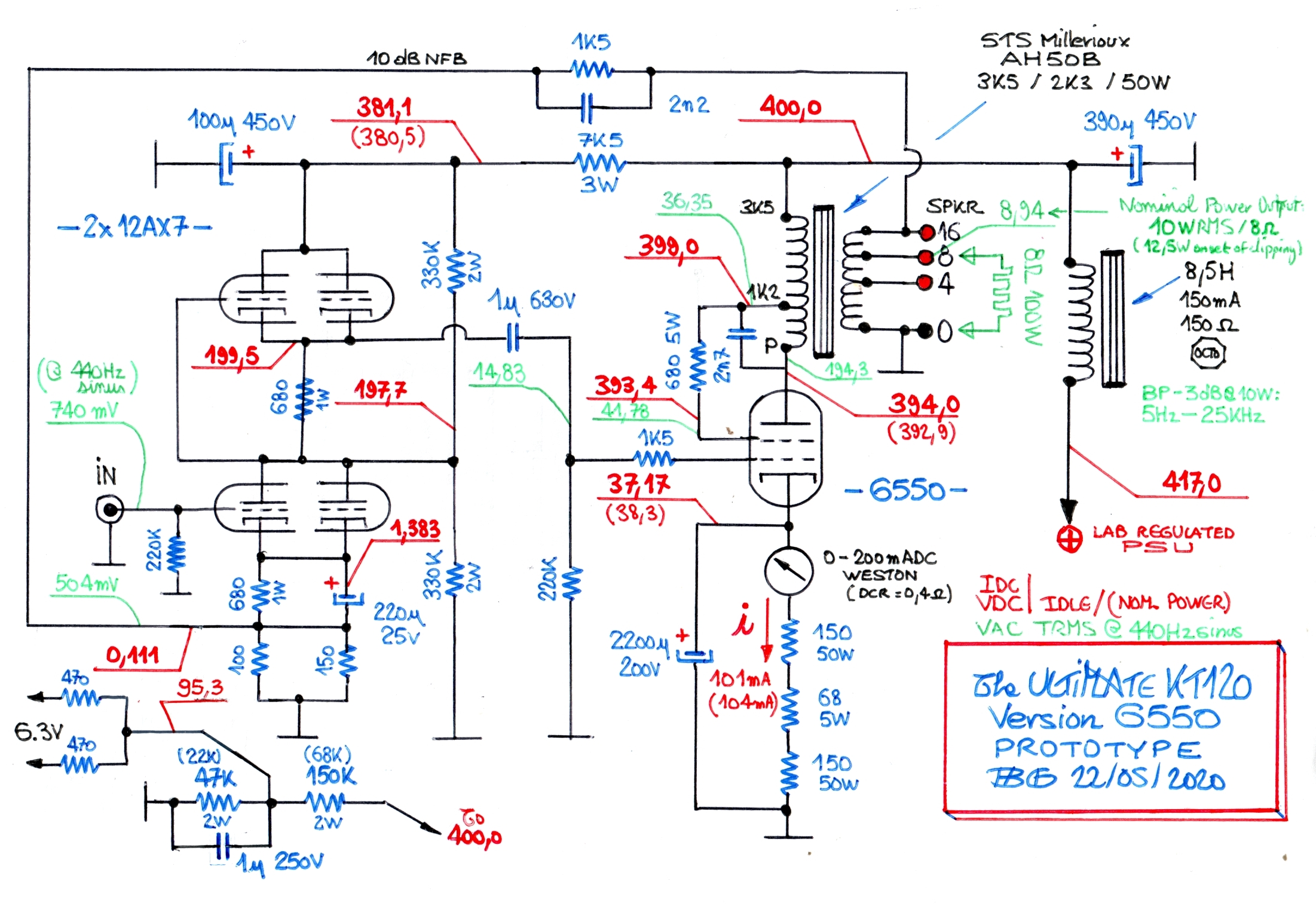OK, after :
- The ULTIMATE 300B
- The ULTIMATE OTL6080
Now :
- The ULTIMATE KT120
Note : ULTIMATE seems to somewhat be pretentious, but it doesn't mean "The BEST", only "The LAST" for me, instead... L'ultime tentative...
Like the other ULTIMATEs, it will be built in the same Hammond aluminium box :

The protoype looks like this below :
 [/URL][/IMG]
[/URL][/IMG]
The first measurements and scope examinations proved to be correct sans plus :
:

But far from amazing if I compare to the results given by my U-OTL 6080 :
:

For the moment, except a 10dB NFB, I did not tried any other correction. I wonder if my STS AH50B output transformers (used) have not suffered...
Here are their specs (AH50B and AH53B are nearly identical) - it's in French, but the numbers are understandable, fortunately :


As you can see, they are not "average" models, but...


I'd be interested to see similar oscillograms of such kind of single-ended amp from you Guys, so thanks to post pictures !


A+!
- The ULTIMATE 300B
- The ULTIMATE OTL6080
Now :
- The ULTIMATE KT120
Note : ULTIMATE seems to somewhat be pretentious, but it doesn't mean "The BEST", only "The LAST" for me, instead... L'ultime tentative...
Like the other ULTIMATEs, it will be built in the same Hammond aluminium box :

The protoype looks like this below :

The first measurements and scope examinations proved to be correct sans plus

But far from amazing if I compare to the results given by my U-OTL 6080

For the moment, except a 10dB NFB, I did not tried any other correction. I wonder if my STS AH50B output transformers (used) have not suffered...
Here are their specs (AH50B and AH53B are nearly identical) - it's in French, but the numbers are understandable, fortunately :


As you can see, they are not "average" models, but...
I'd be interested to see similar oscillograms of such kind of single-ended amp from you Guys, so thanks to post pictures !
A+!
OK - these transformers are not premium : their assembly and impregnation have to be desired... Too bad, otherwise their performances would be good. 
Since I had them for free, I won't complain too much...
Here are the last square wave oscillograms :

And the matching schematic :

Tests in Triode and Pentode operation proved no better, and even showed inferior in power output or distortion.
I'm afraid that going further in improvements with those transformers should really be possible, unfortunately...
Wait and See...
A+!
Since I had them for free, I won't complain too much...
Here are the last square wave oscillograms :

And the matching schematic :

Tests in Triode and Pentode operation proved no better, and even showed inferior in power output or distortion.
I'm afraid that going further in improvements with those transformers should really be possible, unfortunately...
Wait and See...
A+!
I'd be interested to see similar oscillograms of such kind of single-ended amp from you Guys, so thanks to post pictures !
Oscillograms don't tell us much but measurements of THD & IMD would help a lot. All easy to do now, reliable test equipment is widely available. The test conditions should always reported at the same time. Two examples attached. The Ultimate should include the best tests.
Damping Factor is also important data.
Oscillograms don't tell us much but measurements of THD & IMD would help a lot. All easy to do now, reliable test equipment is widely available. The test conditions should always reported at the same time. Two examples attached. The Ultimate should include the best tests.
Damping Factor is also important data.
Attachments
Grand work there, looks like you have a bit of overshoot/ringing as well as LF & HF loss. this would show up on a frequency sweep. i tend to only use the scope to give everything a quick once over and to dial in the NFB capacitor using a cap decade box. There's a free bit of software called Soundcard Scope, does ya bog standard scope but also THD and FFT. The THD measurement is as good as my HP3903B audio analyser & that's using a cheap SC.
Do wish though that folk wouldn't post such big pics, I have to stand in the field next door looking through binoculars the wrong way round to be able to view them properly : )
Andy.
Do wish though that folk wouldn't post such big pics, I have to stand in the field next door looking through binoculars the wrong way round to be able to view them properly : )
Andy.
I'd be interested to see similar oscillograms of such kind of single-ended amp from you Guys, so thanks to post pictures !
Oscillograms don't tell us much but measurements of THD & IMD would help a lot. All easy to do now, reliable test equipment is widely available. The test conditions should always reported at the same time. Two examples attached. The Ultimate should include the best tests.
Damping Factor is also important data.
I measured the damping factor value : circa 3.
Yes, I must reinstall my measuring software on a PC - a friend could recently successfully reinstall it on a W7 machine. Or acquire one... I'm late on this point.
The interpretation of oscillograms requires a bit of habit, but here they tell about the behavior of the output transformer, the corrections due to FB, etc...
A+!
Grand work there, looks like you have a bit of overshoot/ringing as well as LF & HF loss. this would show up on a frequency sweep. i tend to only use the scope to give everything a quick once over and to dial in the NFB capacitor using a cap decade box. There's a free bit of software called Soundcard Scope, does ya bog standard scope but also THD and FFT. The THD measurement is as good as my HP3903B audio analyser & that's using a cheap SC.
Do wish though that folk wouldn't post such big pics, I have to stand in the field next door looking through binoculars the wrong way round to be able to view them properly : )
Andy.
Yes. These overshoot and ringing are due to a questionable impregnation and assembly of the transformer (a double C circuit).
The picture below shows the difference without and with corrections to compensate transformer flaws :

The frequency sweep without FB nor corrections is linear until 40KHz, then occurs a phase rotation that show a minimum in amplitude at 60KHz, followed by a resonance located at 88Khz.
The 2n7 cap between plate and screen corrects this flaw, nearly neutralizing the phase shift and the resonance.
Adding the 2n2 in // to the 1K5 FB resistor reduces the overshoot and improve square wave symmetry at high frequencies.
The 2200µF/200V on the 6550 Rk helps to flatten a bit the square waves at 20Hz.
The bandwith in sinus rests at 5Hz - 25KHz @-3dB at 10W RMS, which is an acceptable result, faute de mieux...
If you click on the picture (in the lower left corner) you can see them full size, with correct proportions...
A+!
This evening, first audio evaluation tests...
I was suspecting a sonic result from mediocre to average. Nope : honourable mention, not to say good... Surprising.
I heard no redhibitory flaw that would discard the circuit, on the contrary : crispness, dynamic and tonal balance are there, following loudness...
So in-depth tests and comparative listening with other amps (and friends) won't be ridiculous à priori and certainly interesting to perform now.
So wait and See...
A+!
I was suspecting a sonic result from mediocre to average. Nope : honourable mention, not to say good... Surprising.
I heard no redhibitory flaw that would discard the circuit, on the contrary : crispness, dynamic and tonal balance are there, following loudness...
So in-depth tests and comparative listening with other amps (and friends) won't be ridiculous à priori and certainly interesting to perform now.
So wait and See...
A+!
- Status
- This old topic is closed. If you want to reopen this topic, contact a moderator using the "Report Post" button.
- Home
- Amplifiers
- Tubes / Valves
- The ultimate KT120


